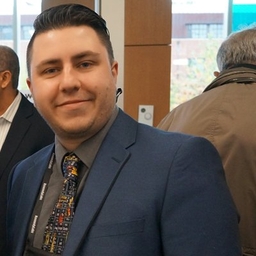
Liam Critchley
Freelance Science Writer and Editor at Freelance
Specialist Freelance #Chemistry and #Nanotechnology Writer | Advisory board member at @NGAgraphene and @NanotechnoWorld and @AMPTnetwork #scicomm
Articles
-
5 days ago |
spectrum.ieee.org | Liam Critchley
As electronics shrink, they require smaller components—including for energy storage. Batteries store a lot of energy but deliver power more slowly, whereas supercapacitors can rapidly charge and discharge but don’t hold much energy. This is the case not only for larger bulk batteries and supercapacitors, but also at much smaller scales, with both micro-batteries and micro-supercapacitors having the same limitations as their bigger counterparts.
-
1 week ago |
electropages.com | Liam Critchley
Key Takeaways: Over 1 billion people globally live with visual impairment, with urban environments posing significant navigation risks due to fast-moving or sudden obstacles. A newly developed wearable device combines glasses and a smartphone to deliver real-time obstacle detection using cross-modal sensor fusion and AI. The system demonstrated 100% collision avoidance in field trials, with under-320ms end-to-end response time and over 11 hours of operational duration.
-
1 week ago |
spectrum.ieee.org | Liam Critchley
Bitcoin mining takes a lot of computation, and therefore, a lot of electricity. After the initial Bitcoin boom in China, the lure of cheaper electricity and a more stable power grid has lured many of the world’s Bitcoin mines to the United States. With that shift comes a corresponding shift in the greenhouse gases and other pollutants created by the energy production required for Bitcoin mining.
-
2 weeks ago |
physicsworld.com | Liam Critchley
The future of quantum communication and quantum computing technologies may well revolve around superconducting qubits and quantum circuits, which have already been shown to improve processing capabilities over classical supercomputers – even when there is noise within the system. This scenario could be one step closer with the development of a novel quantum transducer by a team headed up at the Harvard John A Paulson School of Engineering and Applied Sciences (SEAS).
-
3 weeks ago |
electropages.com | Liam Critchley
Key Thing to Know: Urban road traffic is a major emitter, contributing 11.9% of global greenhouse gas emissions—around 5.88 billion tonnes annually—with congestion in cities like London and Paris generating millions of tonnes of CO₂ each year. China’s megacities face a growing challenge, with transport emissions rising from 96 million tonnes in 1990 to 996 million tonnes in 2021, threatening progress toward the country’s 2060 carbon neutrality goals.
Try JournoFinder For Free
Search and contact over 1M+ journalist profiles, browse 100M+ articles, and unlock powerful PR tools.
Start Your 7-Day Free Trial →X (formerly Twitter)
- Followers
- 596
- Tweets
- 1K
- DMs Open
- Yes

RT @NyokabiJesse: As electronics shrink, they require smaller components—including for energy storage. Batteries store a lot of energy bu…

RT @KathyPretz: Can #Zinc #Microcapacitors Best Batteries or Supercapacitors? - #IEEESpectrum - https://t.co/DJnvc6833t #GoogleAlerts

RT @saritaMish76250: Zinc Microcapacitors Are the Best of Both Worlds https://t.co/0x53o6ja5f